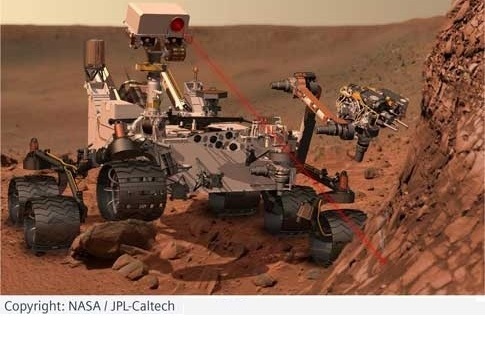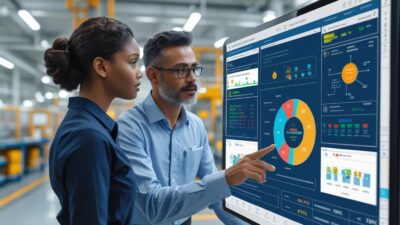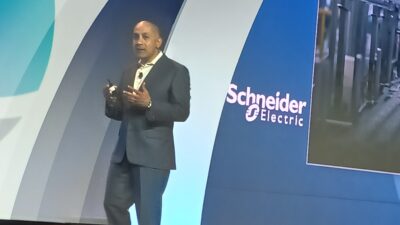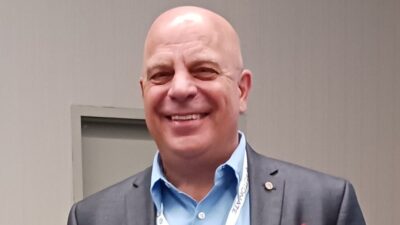NASA enters a new era in space exploration: NASA’s Jet Propulsion Laboratory (JPL) using Siemens software shows how modern software technology is being employed to enhance competitiveness in the aerospace industry. See images; link to videos.

NASA director Doug McCuistion and Siemens Industry CEO Siegfried Russwurm discussed the dawning of a new era of space exploration and the critical roles that NASA engineers and Siemens software technology play in helping to make it possible. The two companies, in a joint July 10 press conference, referenced the impending Aug. 5 landing of the latest Mars Rover Curiosity—designed by NASA’s Jet Propulsion Laboratory (JPL) using Siemens software—as a tangible example of how modern software technology is being employed to enhance competitiveness in the aerospace industry. Part of this ongoing transformation includes public-private partnerships and a constant drive to maximize productivity and shorten development times. [Update Aug. 6: the rover landed successfully.]
“Curiosity is the most sophisticated rover ever sent to Mars, and will further enhance our understanding of the Red Planet while paving the way for future human exploration,” said Doug McCuistion, NASA director of the Mars Exploration Program.
“The incredible team of scientists and engineers at NASA’s JPL has employed the latest in software technology to design the Mars Rover to withstand the impossible extremes of launch, space travel, atmospheric re-entry, and landing a 2000-lb operational vehicle on the surface of Mars.”
2 videos, takeoff and landing
JPL used product lifecycle management (PLM) software from Siemens throughout the development process to digitally design, simulate, and assemble the Rover before any physical prototypes were built. The software helped ensure all components would fit together, operate properly, and withstand whatever environment the mission would require. During entry through Mars’ atmosphere, which is known to JPL scientists as Seven Minutes of Terror: https://www.jpl.nasa.gov/video/index.cfm?id=1090
- The capsule will slow from 13,000 miles per hour to zero.
- External temperatures will peak at over 1,500 degrees Celsius.
- Curiosity will deploy the largest and strongest supersonic parachute ever built to “catch” over 65,000 pounds of force.
- Precision, radar-guided rockets will maneuver the capsule to a full, hovering stop 20 meters above the surface.
- The ship’s sky-crane will lower Curiosity the final meters to a soft landing.
Simulating the Curiosity rover’s final approach and landing was a major feat for everyone involved https://www.youtube.com/watch?v=J6fbivYA4xM&feature=youtu.be as NASA used Siemens PLM Software to account for the thousands of data points (in over half a million lines of code) to recreate the out-of-this-world conditions needed to test the final minutes of Curiosity’s journey to Mars.
Half the time to market
“Siemens is proud of our strong partnership with NASA and the role our technology plays in helping them pursue such extraordinary and ambitious missions,” said Siegfried Russwurm, member of the Siemens Board and CEO of the Industry Sector. In the aerospace industry, Siemens’ overall revenues across all technologies are in the mid-three-digit-million Euro range. Russwurm highlighted the essential role of cost-efficient product design and production in aircraft manufacturing: “The aerospace industry is on the leading edge when it comes to managing the full complexity of sophisticated product development and manufacturing. With our unique Siemens combination of PLM software and automation technologies, we not only cut time to market by up to 50% but also save resources and energy costs.”
As a part of the Siemens vertical IT for industrial production, Siemens PLM software is used by more than 70,000 customers worldwide in aerospace, automotive, electronics, machinery, and other industries.Siemens said it is one of the world’s largest software companies with over 17,000 software engineers worldwide. The scope of vertical IT and software from Siemens comprises software and software-based solutions offered by all of its Sectors Energy, Healthcare, Industry, Infrastructure & Cities for their respective vertical industries. In its Industry Sector, Siemens has been successfully integrating PLM software with automation technologies since the company acquired UGS Corp. in 2007. In the following years, Siemens has continuously expanded its expertise for this growth market. The latest industry software companies Siemens has acquired are Active Tecnologia em Sistemas de Automação (pharmaceutical and biotech production), Vistagy Inc. (composite material design), IBS AG (quality and production management), and Innotec do Brasil (holistic plant management).
The use of Siemens PLM software for this project was mentioned at the Siemens Summit 2012.
– Edited by Mark T. Hoske, content manager CFE Media, Control Engineering and Plant Engineering, [email protected].
ONLINE extras
www.siemens.com/press/aerospace
www.industry.usa.siemens.com/topics/us/en/summit/Pages/summit.aspx?stc=usiia500032




